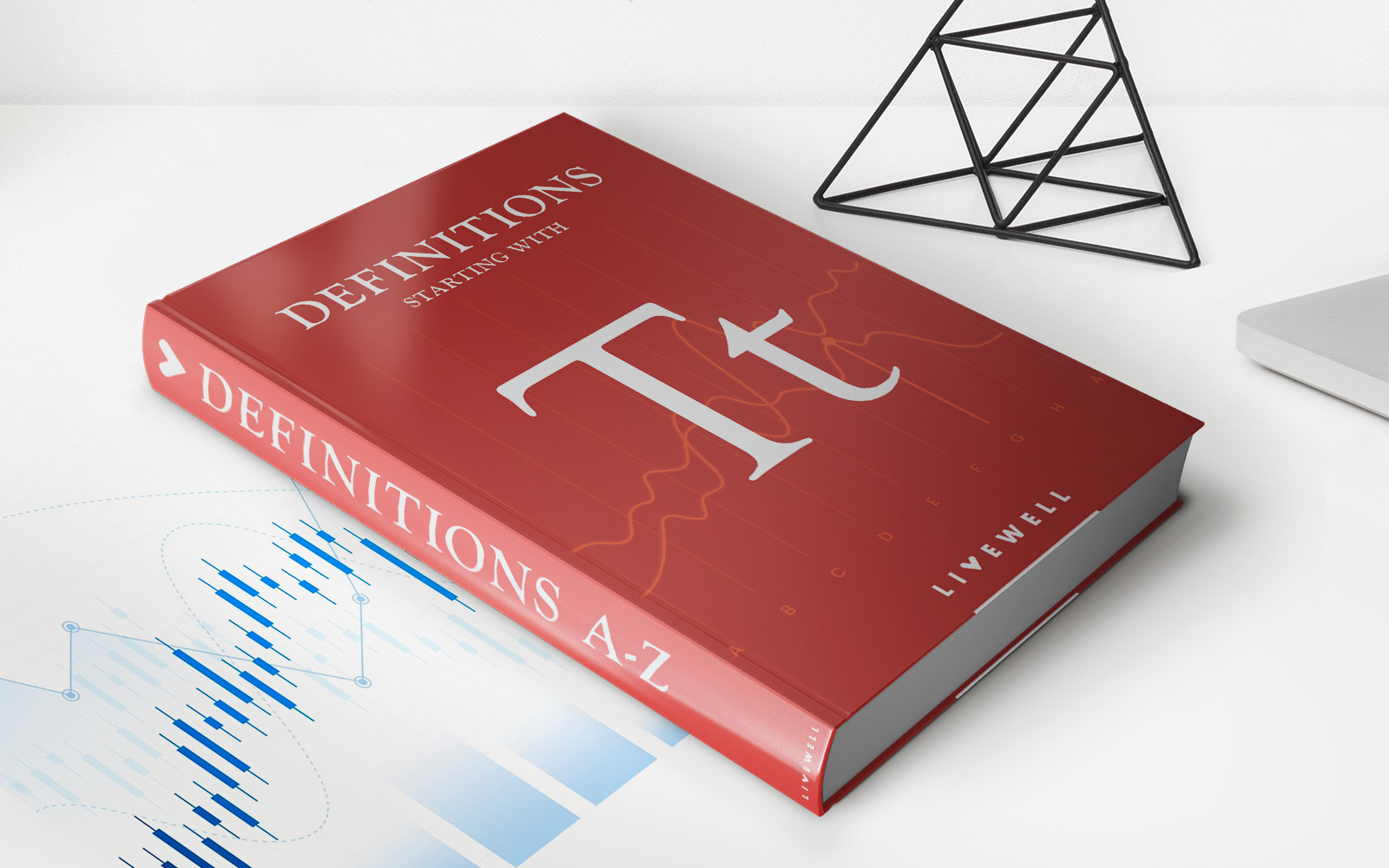

Finance
How To Take Out More Student Loans
Published: January 20, 2024
Learn how to finance your education with student loans. Discover effective strategies to increase your loan options and secure funds for your academic pursuits.
(Many of the links in this article redirect to a specific reviewed product. Your purchase of these products through affiliate links helps to generate commission for LiveWell, at no extra cost. Learn more)
Table of Contents
- Introduction
- Understanding Student Loans
- Determining Loan Eligibility
- Exploring Federal Student Loans
- Applying for Federal Student Loans
- Maximizing Federal Loan Limits
- Evaluating Private Student Loan Options
- Applying for Private Student Loans
- Comparing Loan Terms and Interest Rates
- Managing Student Loan Repayment
- Exploring Loan Forgiveness and Repayment Options
- Conclusion
Introduction
As the cost of higher education continues to rise, many students find themselves in need of additional funding to pursue their academic goals. Student loans have become a common solution, providing financial assistance to cover the expenses of tuition, books, and living costs.
However, navigating the world of student loans can be overwhelming. With different types of loans, eligibility criteria, and application processes, it’s important to understand the options available to you and make informed decisions.
In this article, we will provide a comprehensive guide on how to take out more student loans. We will delve into the various types of loans available, discuss the eligibility requirements, and offer tips on maximizing loan limits. Additionally, we will explore the differences between federal and private student loans and provide guidance on managing loan repayment.
Whether you’re a high school senior getting ready for college or a current student in need of additional funding, this article aims to equip you with the knowledge and resources to make informed decisions about your student loans.
Understanding Student Loans
Before diving into the process of taking out more student loans, it’s crucial to have a solid understanding of what student loans entail. Essentially, a student loan is a financial agreement between a borrower (the student) and a lender (typically a financial institution or the government), where the borrower receives funds to cover educational expenses and agrees to repay the borrowed amount with interest over a specified period of time.
There are two main types of student loans: federal loans and private loans. Federal loans are offered by the government and have benefits such as fixed interest rates, income-based repayment options, and loan forgiveness programs. Private loans, on the other hand, are offered by banks, credit unions, and other financial institutions. These loans often have variable interest rates and may require a cosigner if the borrower has limited credit history or income.
When considering a student loan, it’s important to carefully evaluate the terms and conditions, including interest rates, repayment terms, and any associated fees. It’s also crucial to borrow only what is necessary to cover educational expenses and to have a plan in place for loan repayment.
Understanding the different components of a student loan, such as principal, interest, and repayment options, can help borrowers make informed decisions and avoid unnecessary financial burdens in the long run.
Additionally, it’s essential to be aware that student loans are legally binding obligations, meaning that they must be repaid even if the borrower does not complete their degree or encounters financial difficulties after graduation. Therefore, it’s crucial to consider the potential long-term consequences of taking on student loan debt.
By understanding the basics of student loans, borrowers can make informed decisions, choose the most suitable loan options, and effectively manage their debt to minimize financial strain in the future.
Determining Loan Eligibility
Before taking out more student loans, it’s important to determine if you are eligible to borrow additional funds. Loan eligibility criteria can vary depending on the type of loan you are applying for and the lender’s requirements.
For federal student loans, eligibility is primarily determined by completing the Free Application for Federal Student Aid (FAFSA). The FAFSA evaluates your financial situation and determines your Expected Family Contribution (EFC). The EFC is used to determine your eligibility for federal grants, work-study programs, and loans. It takes into account factors such as your family’s income, assets, and family size.
Once you submit the FAFSA, you will receive a Student Aid Report (SAR), which outlines your eligibility for federal student loans. The SAR also includes your Financial Need, which is the difference between the cost of attending your chosen institution and your EFC. This information is utilized by your school’s financial aid office to determine the amount of federal loans you can receive.
In addition to completing the FAFSA, you may need to meet other eligibility requirements for federal loans. These requirements may include being a U.S. citizen or eligible non-citizen, maintaining satisfactory academic progress, and not being in default on any previous federal student loans.
Private student loans, on the other hand, have their own eligibility criteria set by the individual lenders. These criteria may include creditworthiness, income, and employment history. Some lenders also require a cosigner if the borrower does not meet certain criteria.
To determine your eligibility for private loans, it’s important to research different lenders and compare their criteria. You can often find this information on the lenders’ websites or by contacting their customer service representatives.
Remember that loan eligibility is not a guarantee of approval. It’s important to carefully review the terms and conditions of any loan offer and consider your ability to repay the borrowed funds.
By understanding the eligibility requirements for different types of student loans, you can determine if you qualify for additional funding and make informed decisions when borrowing for your education.
Exploring Federal Student Loans
When it comes to financing your education, federal student loans are often a great option due to their competitive interest rates and borrower-friendly terms and conditions. Understanding the different types of federal loans available can help you make informed decisions about borrowing for your education.
The most common types of federal student loans are Direct Subsidized Loans, Direct Unsubsidized Loans, and Direct PLUS Loans.
Direct Subsidized Loans are available to undergraduate students who demonstrate financial need. The government pays the interest on these loans while the borrower is in school, during the six-month grace period after graduation, and during deferment periods.
Direct Unsubsidized Loans are available to both undergraduate and graduate students and do not require a demonstrated financial need. Unlike subsidized loans, interest begins accruing on unsubsidized loans as soon as they are disbursed. However, borrowers have the option to defer the interest payment until after graduation.
Direct PLUS Loans are available to graduate students and parents of dependent undergraduate students. These loans require a separate application process and a credit check. The interest rates for PLUS loans are typically slightly higher than those for subsidized and unsubsidized loans.
Federal student loans offer several advantages over private loans. Firstly, they have fixed interest rates, meaning that the interest rate remains the same throughout the life of the loan. This provides borrowers with stability and predictability when it comes to loan repayment.
Secondly, federal loans offer flexible repayment options. Borrowers can choose from various repayment plans, including income-driven repayment plans that base the monthly payment amount on the borrower’s income and family size.
Additionally, federal student loans provide access to loan forgiveness programs and loan consolidation options. Loan forgiveness programs, such as Public Service Loan Forgiveness (PSLF) and Teacher Loan Forgiveness, allow borrowers who meet specific criteria to have a portion or all of their remaining loan balance forgiven after a certain number of qualifying payments.
To apply for federal student loans, you must complete the Free Application for Federal Student Aid (FAFSA). The FAFSA is available online and requires information about your financial situation and the school you plan to attend. The information provided on the FAFSA determines your eligibility for federal loans.
By exploring the different types of federal student loans and understanding the benefits they offer, you can make informed decisions about financing your education.
Applying for Federal Student Loans
Once you have determined that federal student loans are the right choice for you, the next step is to apply for these loans. The process of applying for federal student loans involves a few key steps, which we will outline below.
1. Complete the FAFSA: The first step in applying for federal student loans is to complete the Free Application for Federal Student Aid (FAFSA). The FAFSA is available online and collects information about your family’s financial situation. Be sure to gather all the necessary documents, such as tax returns and income statements, before starting the application. The FAFSA determines your eligibility for federal grants, work-study programs, and loans.
2. Review your Student Aid Report (SAR): After submitting the FAFSA, you will receive a Student Aid Report (SAR) either by email or mail. The SAR summarizes the information you provided on the FAFSA and contains your Expected Family Contribution (EFC) and financial need. Review the SAR carefully to ensure that all the information is accurate. If any corrections need to be made, follow the instructions provided on the SAR.
3. Receive the financial aid offer: Once your school’s financial aid office receives your SAR, they will review your eligibility for federal student loans. If you are approved, the financial aid office will send you a financial aid offer letter outlining the types and amounts of loans you are eligible to receive. Read the offer letter carefully and understand the terms and conditions associated with each loan option.
4. Accept or decline the loans: After reviewing the financial aid offer letter, you will need to accept or decline the federal student loans being offered to you. Keep in mind that you are not obligated to accept the full amount of the loans. Assess your financial needs and only accept the amount necessary to cover your educational expenses.
5. Complete entrance counseling and sign the Master Promissory Note (MPN): Before the loans can be disbursed, you may need to complete entrance counseling and sign the Master Promissory Note (MPN). Entrance counseling provides important information about your rights and responsibilities as a borrower. The MPN is a legal document that outlines the terms and conditions of the loan and your commitment to repay it.
6. Loan disbursement: Once you have completed the necessary requirements, the federal student loans will be disbursed either directly to your school or to you, depending on the school’s policy. The loans will be applied to your educational expenses, such as tuition, fees, and books.
Remember, it’s important to carefully read and understand all the terms and conditions of the federal student loans you are accepting. Be proactive in managing your loan funds and use them responsibly for educational purposes.
By following these steps and completing the necessary requirements, you can successfully apply for federal student loans and finance your education.
Maximizing Federal Loan Limits
When it comes to financing your education with federal student loans, it’s important to be aware of the loan limits and strategies to maximize your borrowing potential. By understanding the loan limits and utilizing certain techniques, you can ensure that you are making the most of the federal loan options available to you.
1. Know the loan limits: Before applying for federal student loans, familiarize yourself with the annual and aggregate loan limits set by the government. The loan limits vary depending on your student status (dependent or independent) and the type of loan (subsidized or unsubsidized). For example, undergraduate dependent students have lower annual loan limits compared to independent students or graduate students.
2. Apply for all eligible grants and scholarships: Taking advantage of scholarships and grants can help lower your overall education expenses and reduce the amount of loans you need to borrow. Research and apply for as many grants and scholarships as possible to supplement your federal loans.
3. Be mindful of interest accrual: Understand that interest starts accruing on unsubsidized federal student loans from the time they are disbursed. To minimize the impact of accruing interest, consider paying the interest while you are still in school or during the grace period. This will help prevent the interest from capitalizing and being added to the principal loan amount, increasing the total amount you have to repay.
4. Consider taking advantage of work-study programs: Federal work-study programs provide part-time employment opportunities to students with financial need. By participating in work-study, you not only earn income to help cover your expenses but also reduce your reliance on loans. The income you earn through work-study does not count against your eligibility for future federal student loans.
5. Explore alternative federal loan options: If you find that the maximum federal loan limits are not sufficient to cover your educational expenses, consider exploring other federal loan options. For example, if your parents are denied a PLUS loan, you may be eligible for additional unsubsidized loans. Contact your school’s financial aid office to explore all available options.
6. Monitor your academic progress: Some federal loan programs have restrictions or requirements based on your academic progress. To maintain eligibility for federal loans, ensure that you meet the satisfactory academic progress standards set by your school. Falling below these standards may result in loss of eligibility for certain loans or financial aid programs.
7. Graduate on time: Graduating on time can save you money in the long run. The longer it takes you to complete your degree, the more you will have to borrow in federal student loans. Plan your course schedule and academic plan carefully to ensure timely graduation.
Remember, while federal student loans can be a valuable tool for financing your education, it’s important to borrow responsibly and consider the long-term implications of your loan debt. Minimize your borrowing to only what is necessary and explore other financial aid options to reduce your reliance on loans.
By understanding the federal loan limits and implementing strategies to maximize your borrowing potential, you can effectively finance your education while minimizing the financial burden in the future.
Evaluating Private Student Loan Options
While federal student loans are a common choice for financing education, they may not always cover the full cost of attendance. In such cases, private student loans can bridge the gap and provide additional funding. However, it’s important to carefully evaluate private loan options to ensure you make the best decision for your financial situation.
When evaluating private student loan options, consider the following factors:
1. Interest rates: Private loans often have variable interest rates that can fluctuate over time. Compare interest rates among different lenders and consider whether fixed or variable rates are more suitable for your circumstances. Lower interest rates can help save money over the life of the loan.
2. Repayment terms: Examine the repayment terms offered by different lenders. Consider the length of the repayment period and whether there are any options for deferment or forbearance if you encounter financial difficulties in the future.
3. Cosigner requirements: Private lenders may require a cosigner, especially if you have limited credit history or income. Evaluate the cosigner release options provided by each lender, as releasing the cosigner can be beneficial for both parties involved.
4. Loan fees: Determine if there are any origination fees or other hidden charges associated with the private loans. Compare these fees among different lenders and factor them into your decision-making process.
5. Repayment assistance: Some private lenders offer repayment assistance programs, such as interest rate reductions or principal rebates, for borrowers who make consistent on-time payments. These programs can help reduce the total cost of the loan over time.
6. Customer service and support: Research the reputation of the lenders you are considering and evaluate their customer service track record. Read reviews and testimonials from current and past borrowers to gauge their level of customer support.
7. Loan limits: Make sure to check the loan limits set by each private lender. These limits can vary depending on the lender and your creditworthiness. Ensure that the loan limits meet your funding needs.
When considering private student loans, it’s crucial to exhaust all federal loan options first and borrow wisely. Compare the interest rates, repayment terms, and borrower benefits offered by different lenders to make an informed decision.
Furthermore, it’s important to only borrow what is necessary and avoid overborrowing. Create a budget and carefully analyze your financial needs to determine the amount you need to borrow.
Lastly, carefully read and understand the terms and conditions of the private loans before signing any agreements. Consult with a financial advisor or the school’s financial aid office if you have any questions or concerns.
By evaluating private student loan options thoroughly and understanding the terms and provisions of the loans, you can make an educated decision that aligns with your financial goals and reduces the overall cost of your education.
Applying for Private Student Loans
If you have explored federal student loans and still require additional funding to cover your educational expenses, private student loans can be a viable option. Applying for private student loans involves several steps to ensure a smooth and efficient process.
1. Research and compare lenders: Start by researching different private lenders to find the ones that best meet your needs. Compare interest rates, repayment terms, and borrower benefits offered by each lender. Consider their reputation, customer reviews, and any additional requirements or restrictions they may have.
2. Gather necessary documents: Before applying, gather all the necessary documents that lenders may require. These documents may include your proof of enrollment, identification, social security number, proof of income, and potentially a cosigner’s information, if applicable.
3. Check your credit score: Private lenders often consider your creditworthiness when evaluating your loan application. Check your credit score to assess your eligibility and determine if you need a cosigner to increase your chances of approval. Improving your credit score can also help you secure a better interest rate.
4. Explore cosigner options, if needed: If you have limited credit history or income, a cosigner with a good credit history can increase your chances of approval and potentially secure a better interest rate. Consider a family member, relative, or trusted friend who is willing to be a cosigner and understands the responsibilities associated with it.
5. Complete the application: Once you have chosen the lender, complete the application form provided by them. Ensure that you provide accurate and complete information. Review the application thoroughly before submitting it to avoid any errors or discrepancies.
6. Review loan terms and conditions: Carefully review and understand the terms and conditions of the loan before accepting any offers. Pay attention to interest rates, repayment options, loan fees, and any borrower benefits offered. Take note of the repayment period and any available deferment or forbearance options, as well as any penalties for early repayment.
7. Get loan approval and sign the agreement: After reviewing your application, the lender will determine your eligibility and evaluate the loan amount you qualify for. If approved, carefully read and understand the loan agreement before signing it. Make sure you understand the repayment terms and obligations associated with the loan.
8. Loan disbursement: Once you have accepted the loan offer and signed the agreement, the lender will initiate the disbursement process. The funds will typically be sent directly to your school, where they will be applied to your educational expenses.
Remember, private student loans often have different terms and conditions compared to federal loans. It’s crucial to borrow responsibly and only take on the amount necessary to cover your educational costs. Make sure to compare multiple lenders and thoroughly understand the terms and conditions of the loan before making a final decision.
Consult with your school’s financial aid office or a financial advisor if you have any questions or concerns about private student loans and their implications.
Comparing Loan Terms and Interest Rates
When it comes to borrowing student loans, one of the most important factors to consider is the loan terms and interest rates. These aspects can significantly impact the total cost of your loan and the repayment process. It’s crucial to carefully compare these factors among different lenders to make an informed decision.
Loan terms refer to the length of time you have to repay the loan. Longer loan terms may result in lower monthly payments but can also lead to higher overall interest costs. On the other hand, shorter loan terms typically entail higher monthly payments but result in lower interest costs over the life of the loan.
When comparing loan terms, consider your financial situation and determine what you can comfortably afford to repay each month. Take into account your income, expenses, and other financial obligations. A balance needs to be struck between a monthly repayment amount that fits within your budget and a repayment term that minimizes the overall cost of the loan.
Interest rates are another crucial factor to compare when examining loan offers. Interest rates directly impact the amount of interest you’ll pay over the life of the loan. Lower interest rates can save you a significant amount of money, while higher interest rates can increase the cost of borrowing.
Pay attention to whether interest rates are fixed or variable. Fixed interest rates remain the same throughout the life of the loan, providing stability and predictable monthly payments. Variable interest rates, on the other hand, can fluctuate over time, depending on market conditions. While variable rates may initially be lower, they can rise over time, potentially increasing your monthly payments.
Comparing loan terms and interest rates allows you to evaluate the most favorable options available to you. It’s recommended to obtain loan offers from multiple lenders and conduct a thorough analysis of the associated costs and benefits.
Additionally, consider any borrower benefits or incentives offered by the lenders. Some lenders may offer interest rate reductions for making on-time payments or other perks that can contribute to the affordability of the loan.
Remember that the loan terms and interest rates you are offered can depend on factors such as your creditworthiness, income, and whether you have a cosigner. Before making a decision, it may be beneficial to improve your credit score or consider having a creditworthy cosigner to obtain more favorable loan terms.
By comparing loan terms, interest rates, and borrower benefits, you can make an informed decision that aligns with your financial goals and minimizes the overall cost of your student loans. Consult with a financial advisor or the school’s financial aid office to seek guidance and ensure you understand the implications of the loan terms before making a final decision.
Managing Student Loan Repayment
Once you have borrowed student loans to finance your education, it’s crucial to have a plan in place for managing the repayment of those loans. Proper management can help you stay on track, minimize financial stress, and successfully pay off your student debt. Here are some key strategies for managing student loan repayment:
1. Know your repayment options: Familiarize yourself with the repayment options available for your specific loans. Federal loans offer various repayment plans, including standard repayment, income-driven repayment, and extended repayment. Private loans may have different options, so be sure to review the terms of your loan agreement. Understand the features and requirements of each repayment plan to choose the one that best suits your financial situation.
2. Create a budget: Develop a comprehensive budget that includes all your income and expenses. Allocate a specific amount toward your student loan payments each month and prioritize making those payments on time. Adjust your budget as needed to ensure you can meet your loan obligations without compromising your other financial responsibilities.
3. Consider automatic payments: Many lenders offer an incentive to borrowers who set up automatic payments. By enrolling in automatic payments, you may be eligible for interest rate reductions or other benefits. Additionally, automatic payments can help you stay organized and avoid missing payments.
4. Make extra payments if possible: If your financial situation allows, consider making extra payments towards your student loans. By paying more than the minimum required amount each month, you can reduce the overall interest you’ll pay over the life of the loan and potentially pay off your loans faster.
5. Explore loan forgiveness and repayment assistance programs: Some federal loans offer loan forgiveness programs or repayment assistance options. For example, the Public Service Loan Forgiveness (PSLF) program forgives the remaining loan balance after making 120 qualifying payments while working for a qualifying employer. Research if you qualify for any loan forgiveness or repayment assistance programs and follow the necessary steps to apply.
6. Communicate with your loan servicer: Stay in touch with your loan servicer and inform them of any changes to your contact information or financial circumstances. They can provide guidance and support if you are facing difficulties in making your payments. Don’t hesitate to reach out to them to clarify any questions or concerns you may have regarding your loan repayment.
7. Stay informed about repayment updates and changes: Keep yourself updated on any changes to loan repayment policies or regulations. Stay informed about potential opportunities for refinancing or consolidating your loans, as these may offer benefits such as lower interest rates or more favorable repayment terms. Regularly review news and updates related to student loan repayment to ensure you are aware of any options that could benefit you.
Remember, managing student loan repayment requires proactive planning and organization. By creating a budget, understanding your repayment options, and staying informed, you can effectively manage your student loan obligations and work toward becoming debt-free.
If you’re experiencing financial hardship, don’t hesitate to seek assistance from a financial advisor or the student loan servicer. They can help guide you through your options, such as deferment, forbearance, or income-driven repayment plans, to ensure you have the support needed to successfully navigate the repayment process.
Exploring Loan Forgiveness and Repayment Options
When it comes to managing your student loan debt, it’s important to be aware of the various loan forgiveness and repayment options that may be available to you. These programs can provide financial relief and help you navigate the sometimes challenging task of repaying your student loans. Here are some key options to explore:
1. Income-Driven Repayment (IDR) Plans: Income-driven repayment plans are available for federal student loans. These plans calculate your monthly loan payment based on your income and family size, and they extend the repayment term from the standard 10 years to 20-25 years. After the repayment period, any remaining loan balance may be eligible for forgiveness. The different types of IDR plans include Income-Based Repayment (IBR), Pay As You Earn (PAYE), Revised Pay As You Earn (REPAYE), and Income-Contingent Repayment (ICR). It’s important to understand the specific requirements and benefits of each plan to determine the best option for your situation.
2. Public Service Loan Forgiveness (PSLF): The Public Service Loan Forgiveness program is available to borrowers who work full-time in public service jobs, such as government or non-profit organizations. After making 120 qualifying payments while working for an eligible employer, the remaining loan balance may be forgiven. It’s important to meet specific requirements and submit the necessary paperwork to be eligible for PSLF. The PSLF program is a valuable option for borrowers pursuing a career in public service.
3. Teacher Loan Forgiveness: The Teacher Loan Forgiveness program is designed to encourage individuals to pursue careers in teaching. Teachers who work in low-income schools or educational service agencies for five consecutive years may be eligible for loan forgiveness of up to $17,500 on their federal Direct Subsidized and Unsubsidized Loans or Subsidized and Unsubsidized Federal Stafford Loans. Eligibility criteria and requirements vary, so it’s important to carefully review the program guidelines.
4. Loan Consolidation: Loan consolidation allows you to combine multiple federal student loans into a single loan, resulting in one monthly payment. This can make loan repayment more manageable by simplifying the repayment process and potentially providing more favorable repayment terms. However, it’s important to note that loan consolidation may result in a longer repayment period and potentially more interest paid over time.
5. Refinancing: Refinancing involves replacing your existing student loans with a new loan from a private lender with potentially better terms, such as a lower interest rate or more favorable repayment options. It’s important to carefully evaluate the terms and benefits of the new loan to ensure it aligns with your financial goals. Refinancing federal student loans into private loans, however, means forfeiting federal loan protections and benefits such as income-driven repayment plans and forgiveness programs.
6. Deferment and Forbearance: If you experience financial hardship or other qualifying circumstances, you may be eligible for deferment or forbearance. Deferment allows you to temporarily postpone your loan payments, and interest may not accrue during this period for certain types of loans. Forbearance allows you to temporarily reduce or pause your loan payments, but interest will continue to accrue during this time. It’s important to contact your loan servicer to discuss the available options and determine the best course of action for your specific situation.
It’s crucial to thoroughly research and understand the details, requirements, and potential consequences of each loan forgiveness and repayment option. Be aware that some forgiveness programs may have tax implications, such as forgiven amounts being subject to income tax. Consulting with a financial advisor or a student loan specialist can provide valuable guidance in exploring and navigating these programs.
By exploring loan forgiveness and repayment options, you can find programs that align with your career goals, financial situation, and long-term objectives, helping you manage and potentially reduce your student loan debt.
Conclusion
Navigating the world of student loans can be overwhelming, but by understanding the options available and being proactive in managing your debt, you can successfully finance your education. Whether you choose federal loans, private loans, or a combination of both, it’s important to weigh the benefits and considerations of each option.
Start by evaluating your eligibility for federal student loans through the Free Application for Federal Student Aid (FAFSA). Federal loans often offer competitive interest rates, flexible repayment options, and potential loan forgiveness programs. Maximize your federal loan limits by applying for all eligible grants and scholarships and staying informed about available options.
If you still require additional funding, explore private student loans. Compare interest rates, repayment terms, and borrower benefits among different lenders to find the best fit for your financial situation. Be mindful of the potential long-term implications and carefully review the terms and conditions before making a decision.
Once you have borrowed student loans, it’s crucial to have a plan for managing the repayment process. Understand your repayment options, create a budget, and make your payments on time. Consider enrolling in automatic payments and exploring opportunities to make extra payments to reduce the overall interest you’ll pay.
Furthermore, familiarize yourself with loan forgiveness and repayment assistance programs. Income-driven repayment plans can help make monthly payments more manageable, while programs like the Public Service Loan Forgiveness (PSLF) and Teacher Loan Forgiveness provide potential opportunities for loan forgiveness. Look into loan consolidation and refinancing options if they align with your goals and financial circumstances.
Remember, maintaining open communication with your loan servicer and staying informed about changes in loan repayment policies is crucial. Seek guidance from financial advisors or student loan specialists if needed.
Managing student loan debt requires careful planning and responsible borrowing. By being proactive, exploring your options, and staying informed, you can successfully navigate the repayment process and work towards achieving financial freedom.
Remember, education is an investment in yourself and your future. By approaching student loans with knowledge and a strategic mindset, you can pave the way for a bright and fulfilling academic journey while keeping your financial well-being intact.














